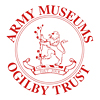

(L to R) 1914-15 Star; British War Medal; Allied Victory Medal
John was born between July and September 1895 in Chorlton, Lancashire. His father was called John William and his mother was Amy. He had an older brother called Charles Edward and a younger brother named Jack.
John senior worked as a grey-cloth agent, buying and selling untreated, unfinished fabric that could be turned into garments. He died aged just 30 on the 9th July 1896. At the time the family lived at 73 Bishop Street in Moss Side, Manchester. He left Amy £437 17 shillings and 3 pence.
By 1901 Amy, John and Jack had gone to live with her brother William Hesford and his family at 2 Parsonage Street in nearby Chorlton. She worked from home as a machinist, making shirts.
In 1911 all 3 children lived with Amy at 162 Tamworth Street in Moss Side. She no longer worked, but all of her sons did. Charles was a paperhanger, Jack worked as a shop assistant for a furniture dealer and John was an upholsterer.
The 1911 Census was taken in early April. Shortly before this John had joined the 7th Battalion of the Manchester Regiment, most likely during January. This was a unit of the Territorial Force based on Burlington Street in Manchester. John kept his civilian home and job and trained as a soldier during evenings and weekends, as well as an annual training camp lasting around 2 weeks. His service number was 1282.
When the First World War broke out in August 1914 the 7th Battalion was called up for full time service. They were sent overseas on the 10th September and arrived in Egypt on the 25th. The Battalion then sailed down the Suez Canal to Khartoum in Sudan. They were based here until April 1915. The battalion had many jobs, mainly based around guarding important points such as the Governor-General's Palace and railway lines.
In April the 7th Battalion returned to Egypt and joined their comrades preparing for the invasion of Gallipoli. The battalion landed on this Turkish territory on the 7th May. We don't know whether John was wounded or taken ill at any point during his time in Gallipoli.
Within days the battalion was in the front line and taking casualties from the Turkish defenders. On the 4th June the British launched a large attack on the village of Krithia. This had been intended to be captured during late April when the first Allied troops landed, but the Turks had been able to hold them off. John and the 7th Battalion advanced further than most British units, but this meant when the Turks counter attacked they were cut off and forced to withdraw without capturing the village.
The 7th Battalion lost many men killed and wounded during this fighting. Their next large operation took place on the 6th and 7th August, again in the Krithia area, and again unsuccessfully.
From then on life in Gallipoli was quieter, but no less dangerous. The 7th Battalion took its turn in the front line and in the rear; it took casualties from Turkish snipers and artillery as well as losing men to diseases such as diarrhoea and dysentery. One of these men was John. He was killed in action on the 16th September 1915, aged just 20. We don't know exactly what happened to him.
After the war John's grave could not be found, so his name is one of the 20885 commemorated on the Helles Memorial in Turkey. John's name can be found between Panel 158 and 170.




